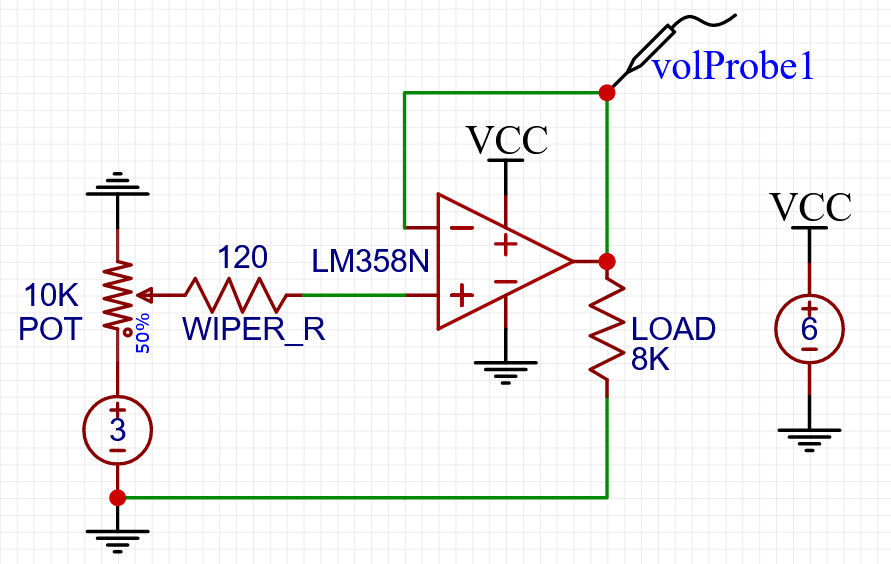I'm trying to cancel wiper resistance of a 10 kΩ DiGiPot that controls output voltage of a switching power supply. I'm using MCP4131-103 that has 120 Ω wiper resistance @0% pot position. This wiper resistance limits the max voltage that I can get from power supply.
In this post there is a method that I have simulated it in EasyEDA:
 But there is an issue! I want to use LM358 that is not a bipolar op amp both because I have it in my disposal and also it needs a single power supply (0-12 V) instead of (-6 to +6 V).
So I tried this sketch that apparently is not right:
But there is an issue! I want to use LM358 that is not a bipolar op amp both because I have it in my disposal and also it needs a single power supply (0-12 V) instead of (-6 to +6 V).
So I tried this sketch that apparently is not right:

Can please someone tell me how can I reach a solution using LM358?
ANSWER:
THANKS to Andy aka for providing the solution, just adding the final sketch for documentation:

This sketch gives me all I want:
- POT@0% -> probe 3V
- POT@50% -> probe 1.5V
- POT@100% -> probe 0V

